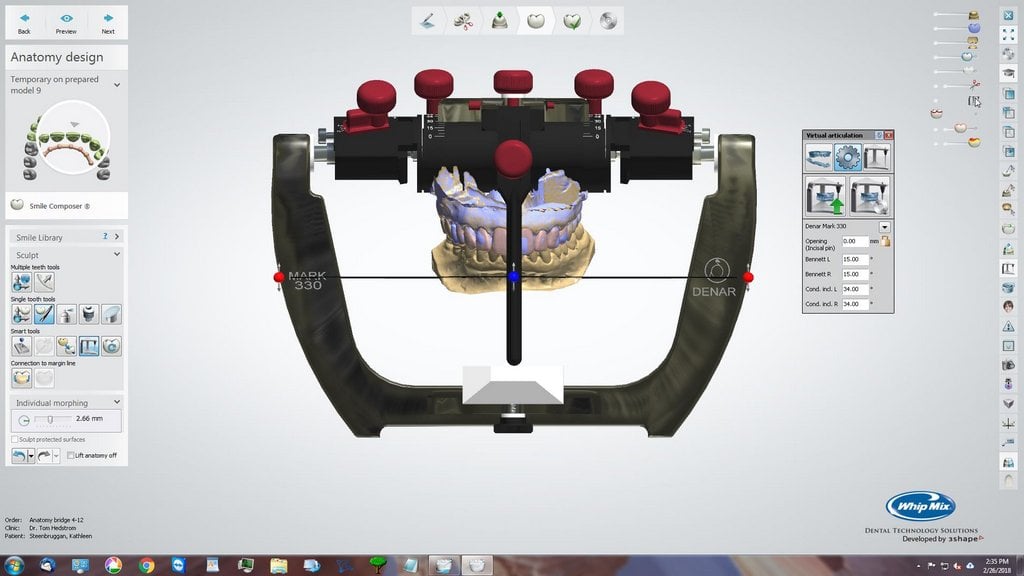This blog is a continuation from our earlier discussion, where we covered the popularity of the fixed setting articulator.
Open Fossa vs Closed Tracking Instruments
For those dental professionals who want to have the ability to program their articulator to exactly match the movements of the patient’s mandible, then our discussion needs to go a little deeper.
Let me start it by telling you that articulators are designed to have either “open fossa” or “closed tracking” condylar guidance. The question that I get a lot is: is one design better than the other? The short answer is no. It all depends on whether you want to remove the upper member form the lower member or are you more comfortable knowing the upper member will not separate from the lower member. “Open fossa” or “Closed track” is your first decision.
Open Fossa Condylar Guidance
“Open fossa” designs are very popular with dental technicians that manufacture mostly crown and bridge cases which include porcelain crowns. “Open fossa” design means that when the centric latch is released, the upper member can be removed from the lower member. As mentioned, very popular with technicians who work in the “fixed” department. Why? Consider this: if you are an individual who is waxing up either a single crown or multiple units, it’s nice, after checking opposing contacts, to be able to remove the opposing arch, giving you full access to add or remove wax or porcelain without that arch being in your way. Once you’ve made the adjustment - either additive or subtractive - you can very quickly replace the opposing member and recheck contacts. An open fossa design gives you quick access.
Closed Tracking
Why would someone choose a closed tracking design? Closed Tracking gives the user security because the articulator stays together. Most notable is the still popular Hanau 96H2 and Hanau WideVue. They can be seen being carried around in laboratories and dental schools by the upper member while the lower member swings around freely.
A little bit of history: the Hanau instrument was designed for the complete denture technique. Because of this well publicized study and substantial research in the removable arena, it became the go-to instrument for anyone in the field of complete dentures.
Currently, a closed tracking instrument is very popular in the teaching of removable dentures in undergraduate dental schools. A reason for the closed tracking design being the instrument of choice in the teaching environment, is that when you close the upper member to help set the denture teeth, you are assured that the teeth will be pushed into the wax rim instead of having the upper member lifting off of the condylar ball. This saves a lot of incorrect denture setups by students and or technicians new to complete dentures. So, using a closed track instrument in complete dentures is used as a safety mechanism.
Some readers may say that they are using open fossa designed instruments in their labs now for complete dentures and do not have any issues with occlusion during denture set up. That is most likely very true. Today’s open fossa designs have a well-designed and strong centric latch or bilateral elastics with increase holding strength to keep the upper member in contact with the lower member during the set up. I might also add that there are some instruments that have a modified condylar guidance; a combination of both closed tracking and open fossa.
Now that you are familiar with the “open fossa” and the “closed tracking” designs, we can focus on other features of articulators in the market and their role in the fabrication process.
Next week in Part 3: Adjustable Inclination and Bennett Angle settings











.png)
Leave a comment